Related Tags
“We want to be a guitar company driven by a guitar maker”: Taylor’s Andy Powers on why he’s taking the reins as the company’s new CEO
The newly minted chief guitar designer, president and CEO on why Taylor wants to do things differently but keep guitar-making at its core, the unique challenges of the company’s new 700 Series Koa instruments, and whether the brand could ever be tempted back into the electric market.
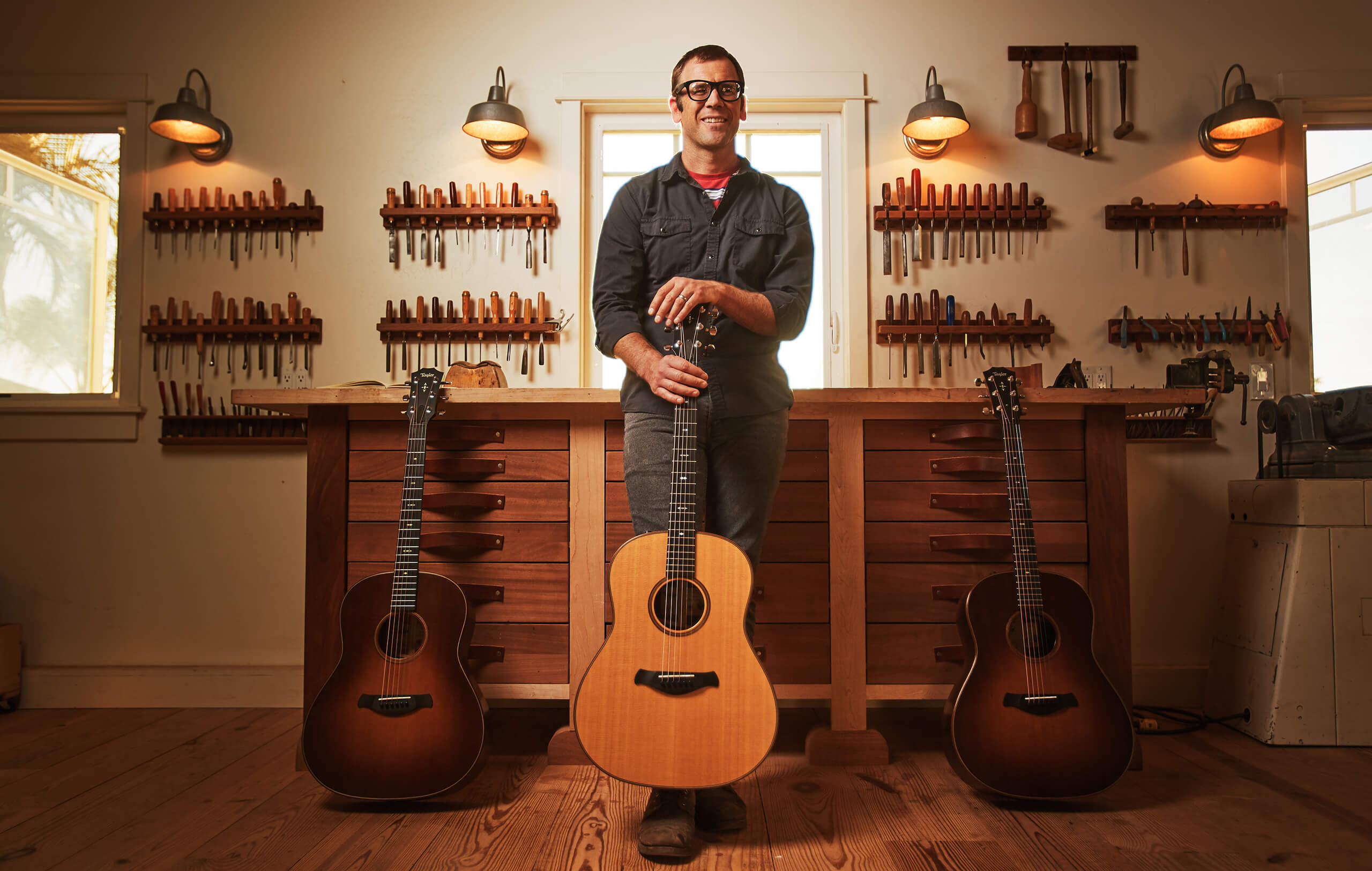
Image: Taylor Guitars
Andy Powers is all smiles. Not that this is unusual – if you’ve ever met the Taylor Guitars’ creative fulcrum, you’ll know that his general demeanour is nothing short of sunny. But the smile seems bigger today, his vibe more gregarious and enthusiastic.
He’s got a lot to smile about, not least his new job. After being named an ownership partner at the Californian company in 2019, the 41-year-old luthier is now taking the reins from founders Bob Taylor and Kurt Listug, with a job title – chief guitar designer, president and CEO – that reflects his meteoric rise since joining the company in 2011, as well as his superhuman ability to multi-task.
We suspect his smile, though, has more to do with the fact that, for the first time since 2020, he’s back at the Anaheim Convention Centre for a NAMM show, enjoying the opportunity to reconnect with friends and industry colleagues outside the confines of a Zoom call. For Powers, guitars are better with company.
“I kinda feel like making music, and making instruments, is a very relationship-based endeavour, right?” he says, as we chat in a sound-treated booth in the dealer area of Taylor’s cavernous NAMM stand. “I mean, I can practise in my bedroom all I want, but it’s not until I sit down with a friend or a group of people and we start sharing a song that it really comes alive.
“And building guitars, often we picture something like Geppetto in a workshop, right? Y’know, very lonely, solitary – and I appreciate the solitude. I love that, when it’s appropriate. But even still, there’s this relationship-based thing, where I want to see people who are harvesting wood. I wanna see suppliers. I wanna see other makers. I want to be with musicians. I wanna see all these people that we have a past with, y’know? So, it feels great to restore those relationships.”
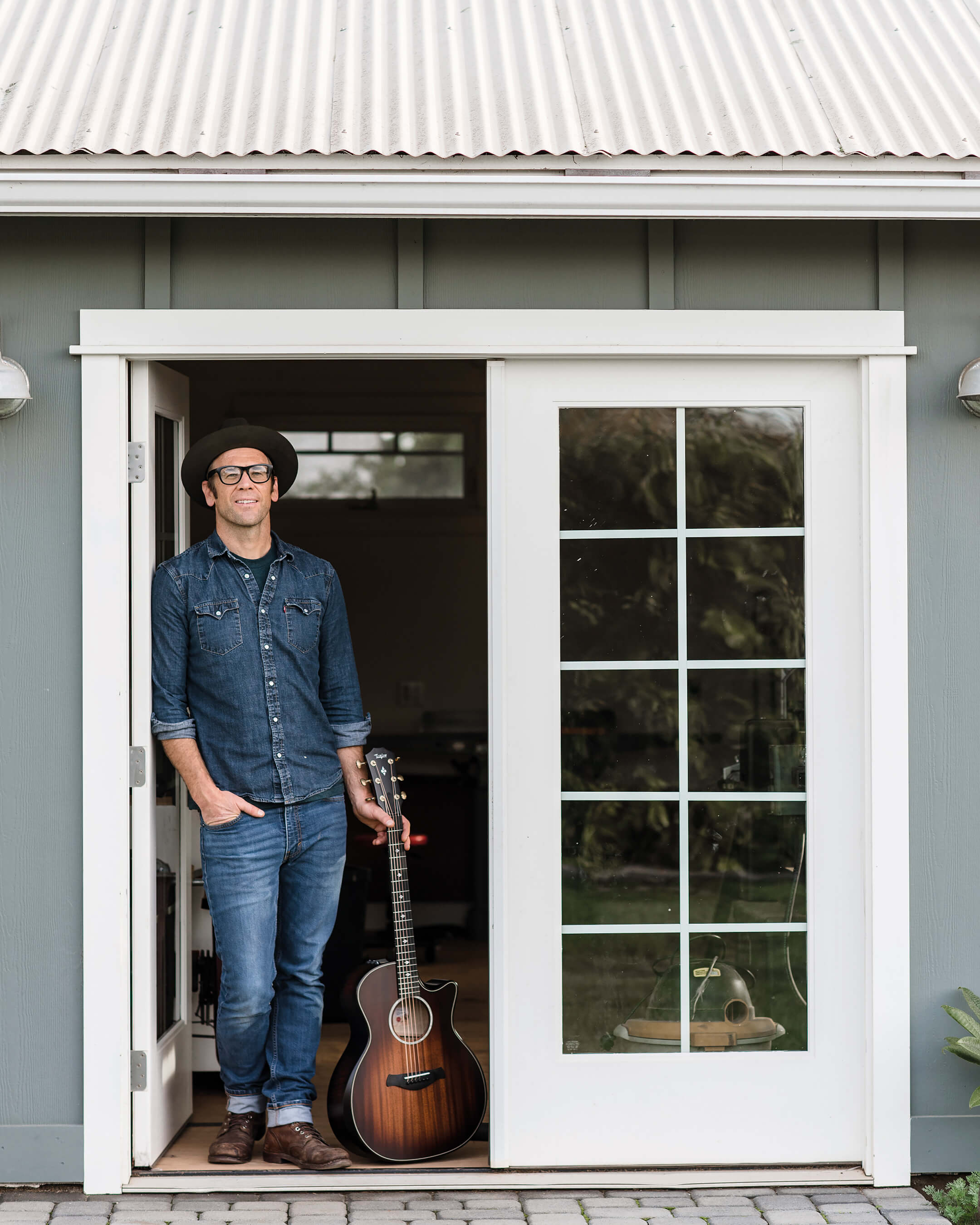
Mr President
When we put it to Powers that his new job title sounds like it comes with a terrifying amount of responsibilities, he’s quick to dispel the notion.
“Technically I’m the chief guitar designer and president CEO of Taylor Guitars,” he says. “But the reality is that not much changes. Because, what we were really interested in was the continuity of our purpose. We want to be a guitar company driven by a guitar maker, and keep the instrument, and instrument making, as our focus.
“That seems atypical in guitar history, because oftentimes you’ll go through a founder or a maker, and they inevitably make a company to support their guitar-making interest, right? That’s how almost every company forms. You go, ‘I really wanna do this thing, so I’m gonna do it’. Then, ‘Oh, I guess it started growing so I guess I need to hire another person’. Like, ‘Oh, I have to pay my taxes’. And, ‘Oh, I need somebody to help maintain the building’. It sort of grows out of that organically.
“Later on, the company inevitably changes hands – every company is sold. It’s sold either on the day you die or at some point before that. It either happens accidentally or it happens on purpose. Oftentimes it reverts to some sort of ownership where a person just wants to operate it as a profit-making machine, and they lose sight of what was important to begin with.”
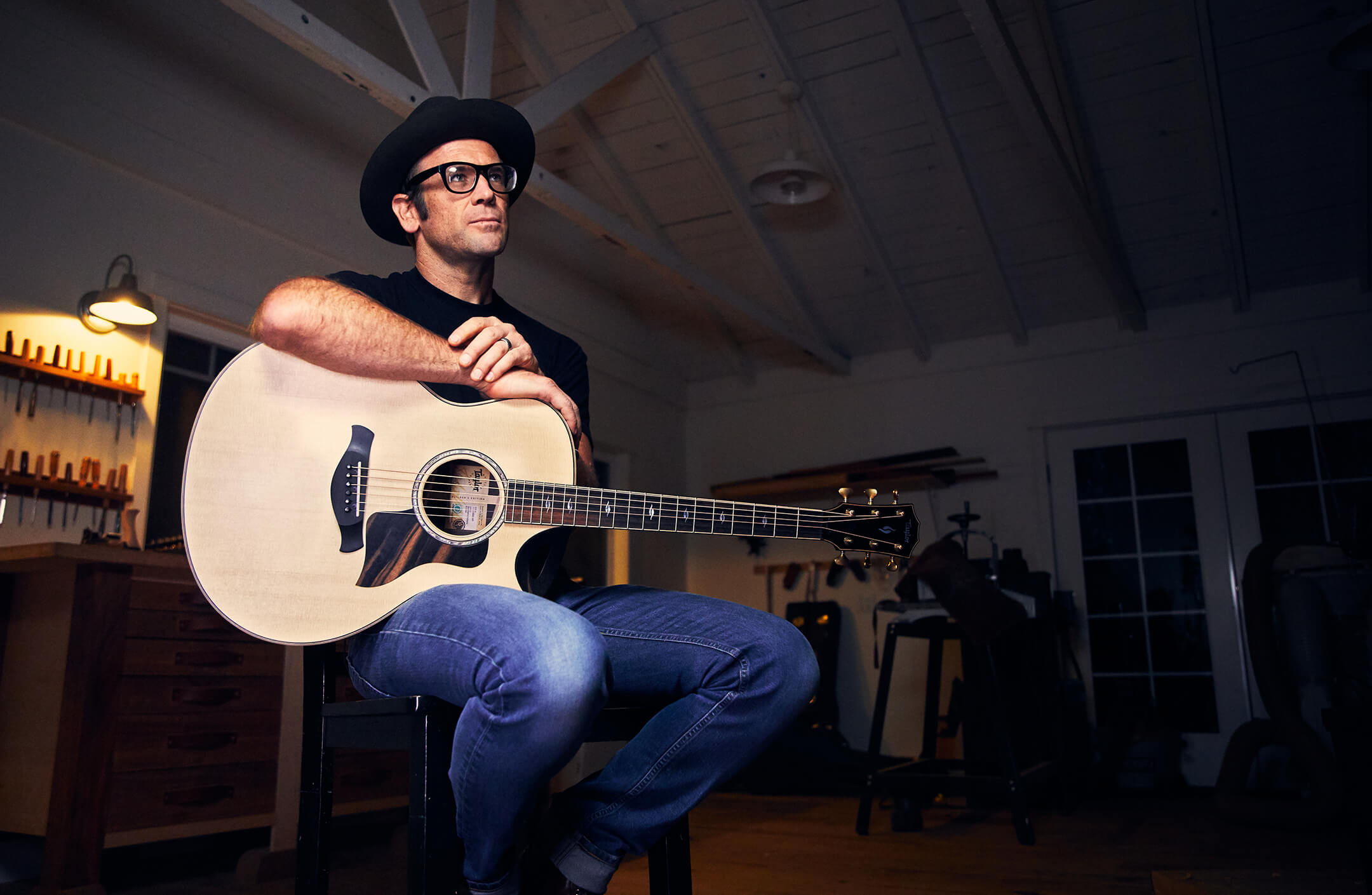
It’s true that there are precious few examples of major guitar companies who have retained their original ownership long-term, and plenty more of great brands that have been driven to the edge (or beyond) by ownership that puts profits ahead of quality and craftsmanship.
“We didn’t want to do that,” says Powers. “We wanted to continue building guitars. So we transitioned into being an employee-owned company about 18 months ago. It’s been years in the making. We’ve been working on it for a long while and, miraculously, we’ve been able to make it happen. We still want to be driven by a guitar-maker. That’s important.
“It’s important to Bob Taylor and Kurt Listug, our founders, and to me. We want to continue doing our work. We want to make these great instruments and put them into the hands of musicians. We like to design new instruments, we like to make different sounds. That’s what we do.”
Taylor and Listug aren’t fully checking out of the brand they started together back in 1974 – the pair are staying on as advisers and co-chairmen of the board. For Powers, the arrangement makes perfect sense, as he and the rest of the company still have the pair on hand to offer advice and wisdom while they shape Taylor’s post-founders existence.
“Now is the perfect time to do it because our trio is still intact,” he says. “We’re all present and accounted for. We’re all still at the workshop. I’m fortunate to have an amazing group of people that I work with directly, who are experts in their field, to help with day-to-day operations. So we can maintain working exactly the way we have. It’s this nice, slow, organic way to transition.”
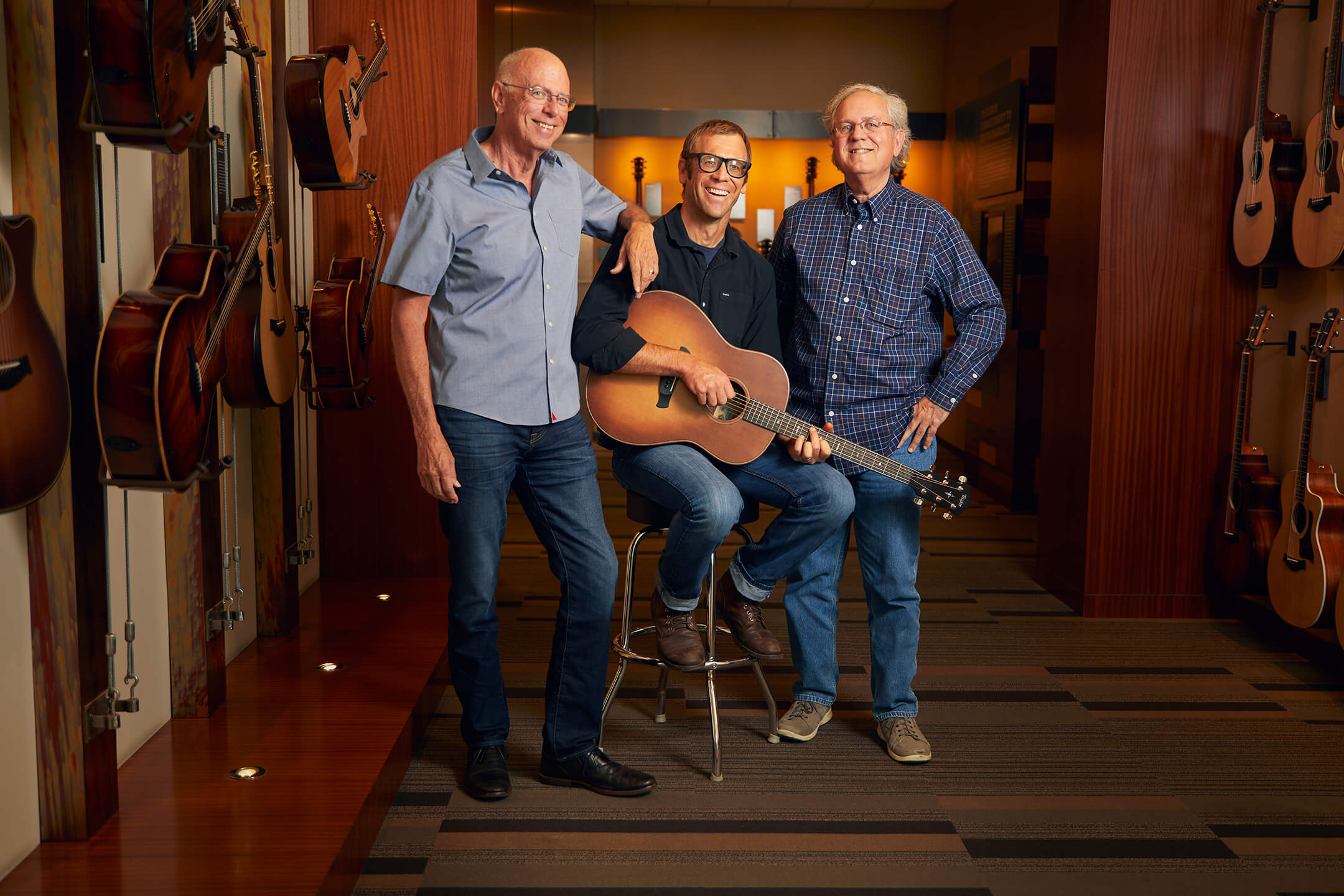
Fast learner
It’s vanishingly rare for a major guitar company to have someone in the top job with such a strong luthiery background, and even more remarkable for that person to barely be into their forties when they’re handed the keys to the kingdom. Powers, however, is wise beyond his years. At an age when many of us hadn’t even picked up a guitar, he was already building them.
“My parents were big hobbyist musicians,” he says. “My dad’s a carpenter and they had this house – it felt like it had an open-door policy because a lot of their friends who were recreational musicians, they’d be over all the time. We’d barbecue and they’d inevitably pass around guitars, a mandolin, whatever instruments were around. I loved that experience. I loved the songs that came out of the guitar.
“So I was pretty thrilled with guitars when I was real young. My dad being a carpenter, he would bring home scraps of wood for projects that he was working on and I had access to the tools in the garage. One day he brought home a piece of wood that was big enough for me to make a guitar with, so I thought, ‘Well, I’ll make a guitar. That seems like a good thing to do!’ I was maybe seven or eight years old.”

Powers may have been making guitars at an age when some of us were still learning to ride a bike but, he’s keen to stress, he wasn’t an expert luthier right out of the gate.
“It was not a guitar – it was a guitar-shaped object,” he says, with a chuckle. “It was a childish attempt at building a guitar. I took nails and cut the points and heads off and glued them in place for frets, y’know? I tried to put strings on it – I had a used set of guitar strings, and six mismatched tuning keys that I begged from one of the local music shops, and the thing just exploded into splinters.
“I’d worked for weeks to put this thing together, and it’s just splinters and kindling of what had been my guitar. And I thought, ‘Woah, that was horrifying… that was amazing!’ Y’know, it’s that little boy fascination of watching something blow up, like a firecracker.
“So I ran in the house and looked at our guitar a little closer and was like, ‘Oh there’s reinforcements inside, okay. Next time I’ll try that!’ So I tried it again – that one broke. I tried it again – that one stayed together a little longer. And I think it was mostly because they didn’t work that my curiosity was drawn even further into it. I already loved that it was made of wood, I loved the shape of it, I loved the songs that came out of it, and so I got immersed in guitars.”
It’s no surprise, then, that when Powers talks about guitar, he’s generally speaking holistically. For him, there’s little distinction between making music, making instruments and the enjoyment he draws from both.
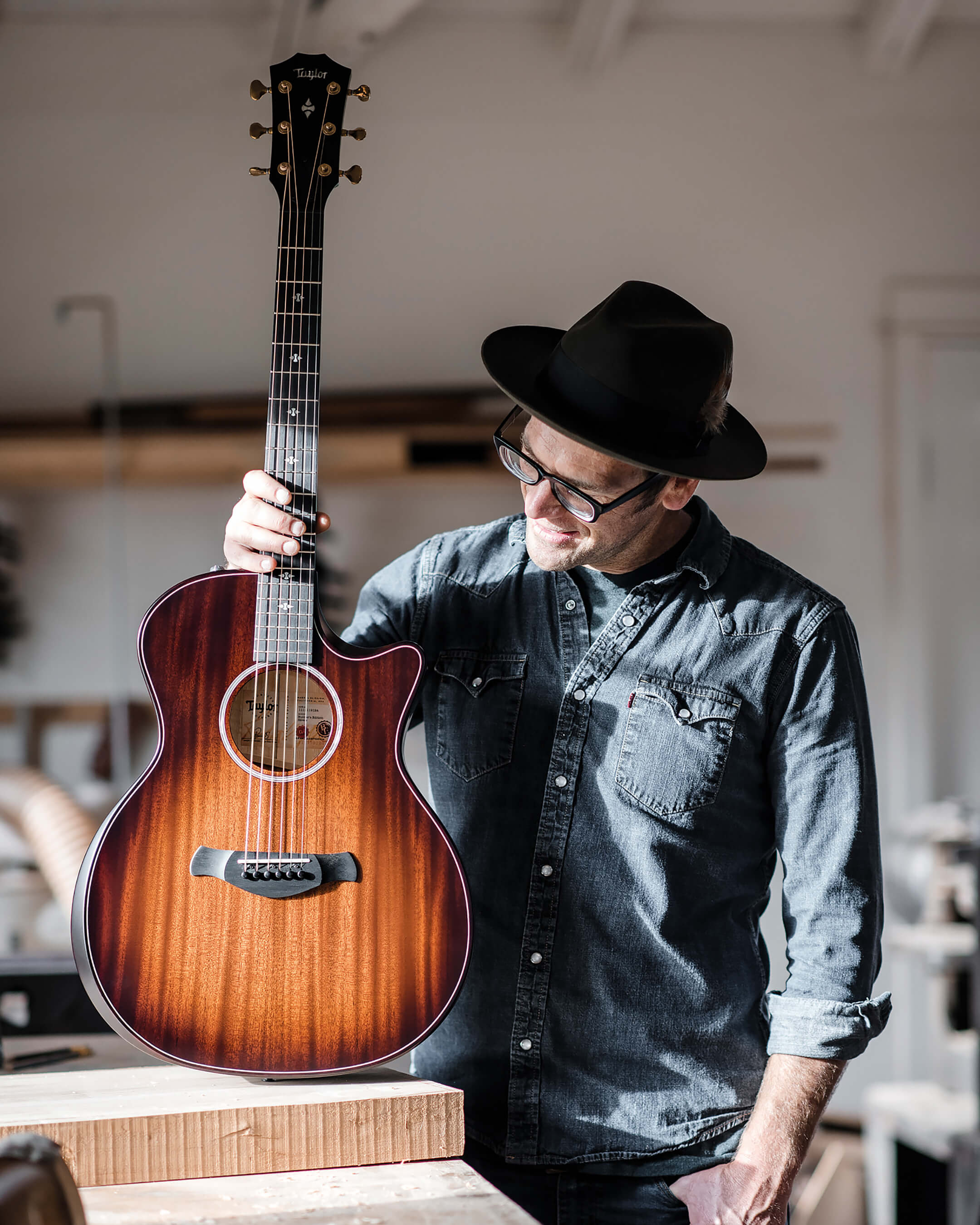
“I could never separate the two,” he says. “I loved playing them, I loved working on them, making them, repairing them, because I loved the instrument as an object. I loved the music that you would make with it and the process of that, y’know? The shared relationship of that. By the time I was in my early teens, I was doing repairs for the local music shops. My mom would drive me around and we’d pick up the broken guitars, bring them back to the house, I’d fix ’em, and then we’d drive ’em back around.
“I studied music at university but by the time I’d finished with all that, I realised, ‘Wow, I’ve been in business for 10 years already’. I couldn’t quit doing it even if I wanted to – because I had a several-year back-order! I’m like, ‘Oh man, I’m stuck! I can’t go anywhere! Good thing I love it!’
“At this point, it’s a little hard to look at it from the outside and go, ‘Well, what was that?’ This is my life. It’s always been that way. I’ve been doing this for more than 30 years now. I love the instrument, in all its forms.”
In many ways, Powers’ outlook on the guitar is similar to the farm-to-table ethos that has swept the food industry: these days, people wish to be involved in every aspect of the thing they do.
“Building the guitar has you invested in a lot of different industries,” he says. “At Taylor, we go all the way back to the forest floor, all the way through to a musician using a guitar. It’s the entire spectrum of that experience. I love being immersed in that. I love tramping off into the forest, like, ‘This is where our wood is going to come from next. Here is how we’re going to do this, we’re gonna plant trees…’ At the other end of the spectrum, you’re making a record? Great! What producer? How are you doing this? What parts are you putting in? What sounds? I love all of it.”

Wood man
That forest-to-studio ethos can be found in Taylor’s flagship launch for 2022. The 700 Series Koa instruments build on the brand’s use of the traditional Hawaiian tonewood elsewhere in the range, discarding the traditional rosewood/spruce combo seen in its core line and replacing it with ‘select grade’ Hawaiian koa, which boasts distinctive grain patterns and hues. To accentuate this, the guitars have been finished using Taylor’s ultra-thin open-pore method, and Powers has tweaked his game-changing V-class bracing to get the best from this unconventional wood.
Asking buyers of premium instruments to forgo traditional acoustic guitar tonewoods – not to mention the traditional looks that go with them – is a bold move for any company. For Powers, it wasn’t a case of trying to force customers to break with traditions but a decision borne from wanting to make use of a wonderful but underused type of koa.
“With some guitars I make, I’ll have a picture and I’m like, ‘I know I want to make this instrument,” says Powers. “Now I need to go and find some materials.’ Sometimes, it works in the opposite direction: ‘I have material – this could sound amazing! I gotta make something outta this!’ In this case, we’re designing an instrument because the material was available.”
Players familiar with koa guitars will be used to the wood’s elaborate curly grain. But a big part of why Powers introduced the 700 Series Koa guitars was to demonstrate that there’s more to the wood than what most are used to.
“We started working closer with our colleagues at Pacific Rim Tonewoods to source koa wood, instead of getting it from a wood vendor or a dealer or something, where you say, ‘I wanna build guitars outta koa,’ and they go, ‘Oh, you want the flamiest, the fanciest-looking stuff!’
“We started working closer, going into the forest and saying, ‘Look at this log, it’s not curly but it’s amazing-sounding material. Let’s open this one up, let’s cut it like this…’ We started looking at it in the same way we would look at ebony or some of our other woods, saying, ‘I want to use what the forest gives us’. Let’s take this amazing wood – straight grain, beautiful colour, great-sounding wood – and design an instrument that plays to that material’s best interests.”
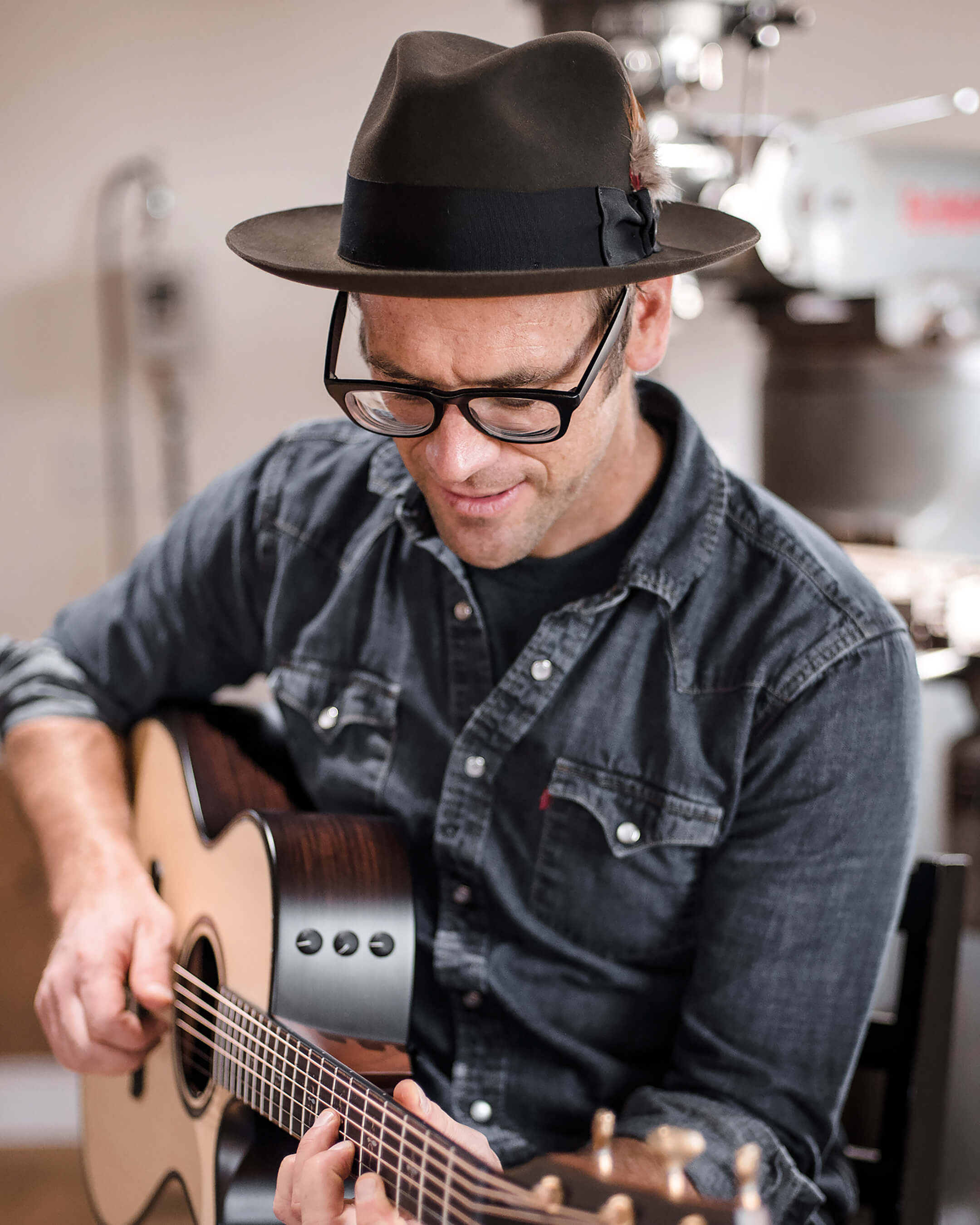
New flavours
The result is a series of instruments that are tonally distinct from what you might expect from a koa acoustic guitar. As Powers sees it, that’s part of the appeal.
“It’s a little different flavour,” he says. “We’ve been building koa guitars for a long time. They’re the most beautifully polished, refined, and just a glorious sound. I went, ‘Okay, that’s one flavour… that’s one way to cook with that. I want to build a different flavour, that’s a little more direct, a little more organic-feeling, different appointment, a different texture, a different experience when the player holds it.’
“So we end up building the 700 Series guitar, which we’d been building for years as an East Indian rosewood/spruce instrument. I wanted to use this ultra-thin finish, what we call an open-pore finish. It still feels like a piece of wood. You can feel the texture of it, the warmth of it, the organic, tactile experience.
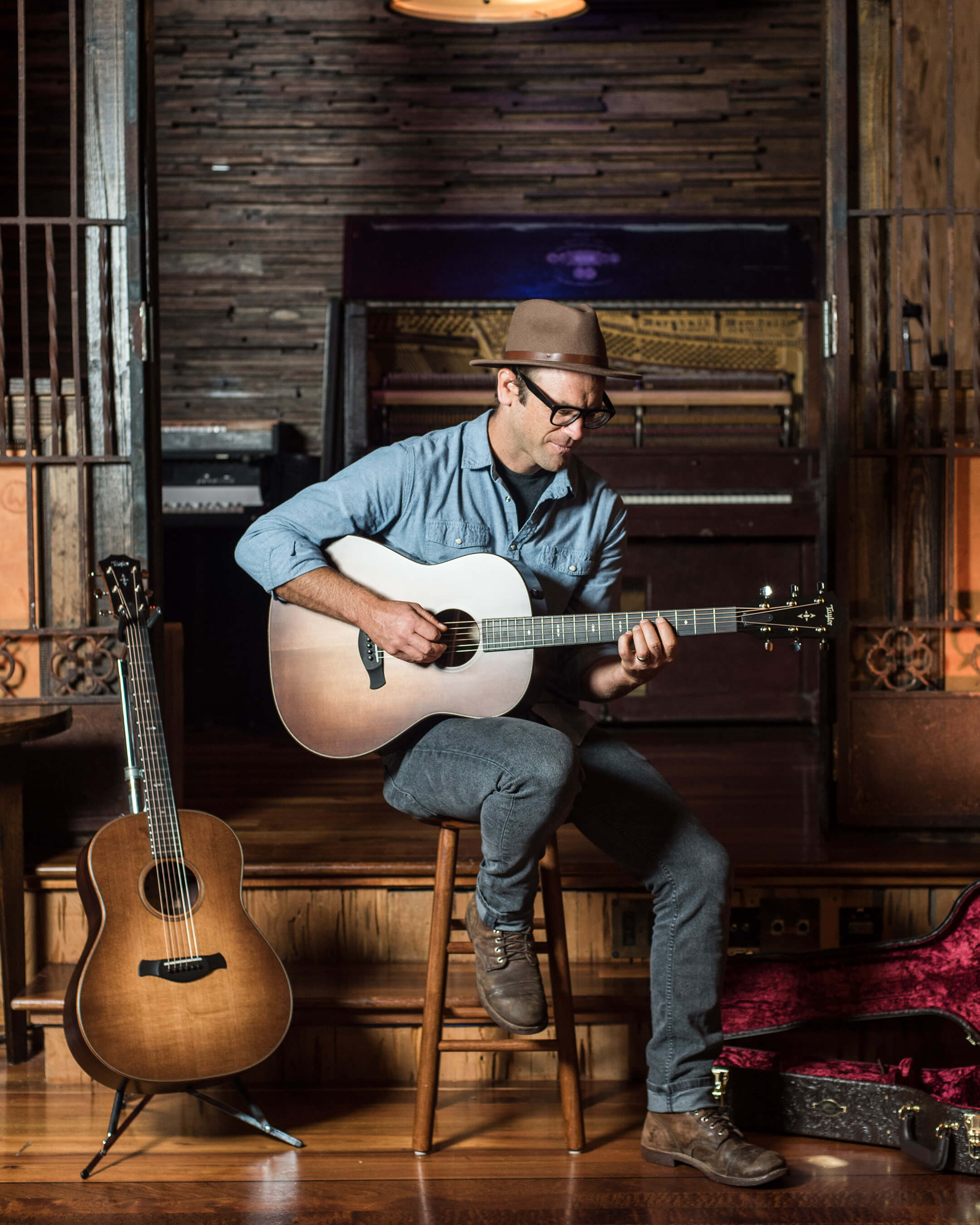
“It feels like you’re touching this tree, y’know? The whole instrument, I appointed with very natural materials – rosewood binding, real shell inlays – but it’s voiced a bit different to work with this material and this finish. Different thickness of the parts, slightly different bracing architecture. It’s a V-class guitar but the back-brace voicing is a bit different, to create a different kind of response. So it fits a different playing style, you hear a little more of the player’s influence over the guitar. It’s what I would describe as ‘player reflective’. It’s almost a bit chameleon-like.
“It’ll reflect the nuance that you bring to the instrument. If you play it warmly, it’s going to be really warm. If you play it bright, it’s going to be bright. You’re going to hear the type of pick you use, you’re gonna hear the strings you put on it. It’s been real fun to introduce to musicians.”
Doing interesting things with unconventional woods has become something of a Taylor hallmark over the past few years. Taylor’s Urban Ash project sees the company using wood from trees removed in urban areas.
“There’s a lot of great woods that we could work with that just simply haven’t been pursued,” he says. “There’s some caveats to that, because the great woods, ones that have good working characteristics, have been used for millennia. There’s a reason we love mahogany. At the same time, there are woods, like those in our urban forestry initiatives, with unique attributes, and when you work with them in the correct ways they can make great instruments.”
Electric dreams
We’re so used to seeing Andy Powers with a Taylor acoustic in his hand that it’s a surprise to hear that when he’s playing for fun – whether with bands, with friends, sitting in on sessions or making music alone – he’s a keen electric player. He also has a passion for pedal-steel (his beloved MSA is one of the few instruments he owns that he didn’t build himself) and piano.
What Powers is not, however, is a collector – at least not anymore. Though he’s held onto inspiring instruments in the past, many of them discovered during his time as a repairer, these days he keeps a simple selection of what he describes as “utility instruments”, which include everything from mandolin and banjo to dobro and pedal steel. “I feel like a foley artist or something – like a sound-effects guy.”
With Powers clearly enamoured with making stringed instruments of all kinds, and given Taylor’s pioneering history with crossover electrics in the T5, we wonder if there might come a time when Taylor ventures once again into making electric guitars as they did in 2008 with the ill-fated SolidBody?
“There’s no part of me that wants to say, ‘No, never,’” he says. “I look at all these instruments and go, ‘Yeah. I like ’em. Let’s do more of this. Let’s do more of that.’ To me, it all feels exciting. I would love to be building more classical guitars, more nylon-string guitars. I love making archtop guitars – that’s like my favourite form of guitar. I love playing ukuleles. More steel-string guitars. To me, it’s all exciting.”
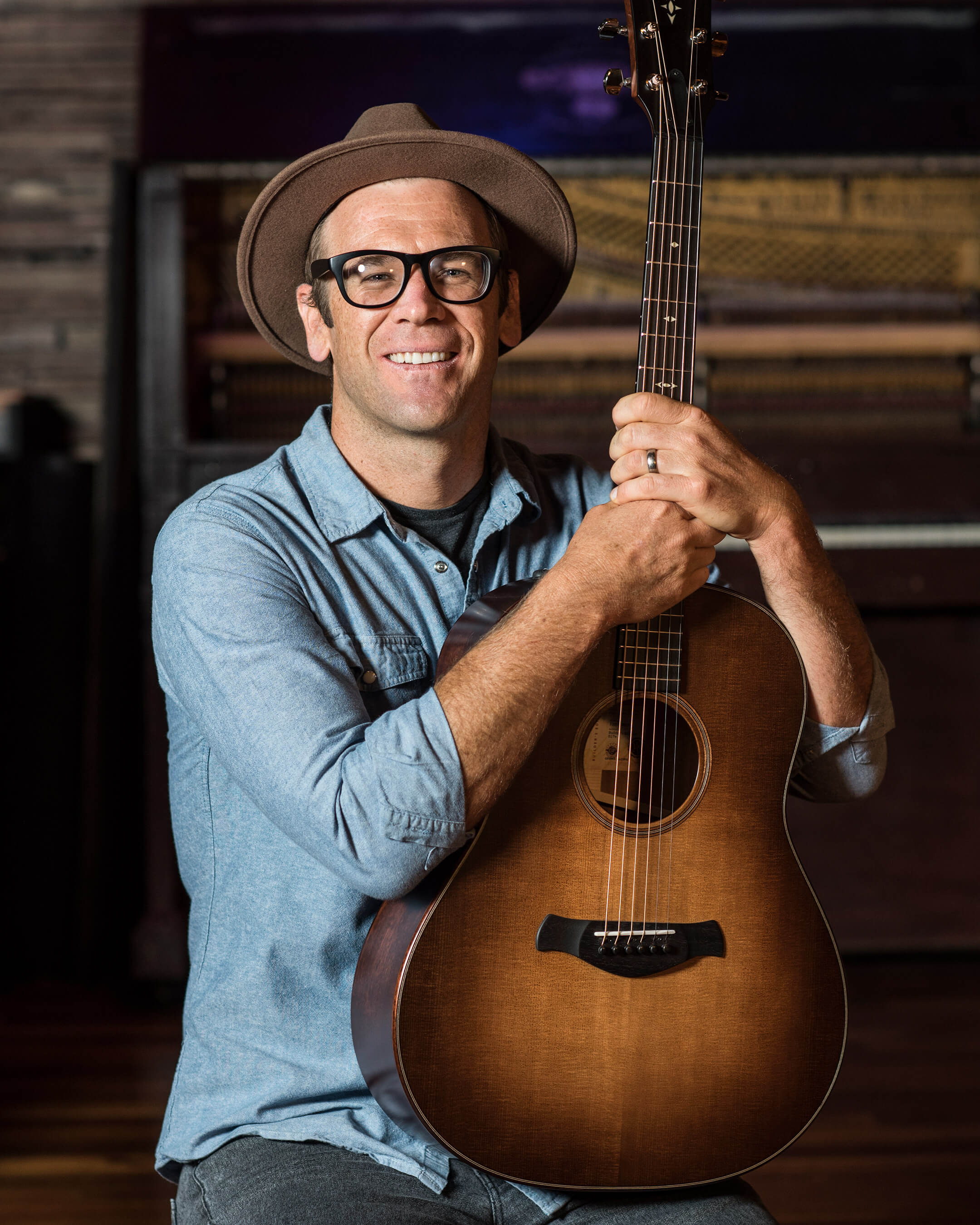
Powers’ most treasured guitar is more sentimental than you might think for someone who has built many world-class instruments over the years.
“I have a flat-top guitar that I play bedtime songs for my kids with,” he says. “That’s the designated bedtime-song guitar. Our kids are still at an age where that’s a thing. They have their setlist they wanna hear every night. And I’m happy to give it to them, as long as they’ll have me.
“That guitar, I built it from some wood that came out of the collections of some other woodworkers who’d been very influential in my life. It’s a great-sounding guitar, a great-playing guitar. But I think it’s more sentimental than anything.
When I pick it up, I go, ‘Oh yeah, I remember the day that this person gave me this piece of wood, or this person gave me that…’, says Powers, all smiles once more. “All those things kinda went together in one instrument. That makes it sound good.”
Find out more about the Taylor 700 Series Koa instruments at taylorguitars.com.
